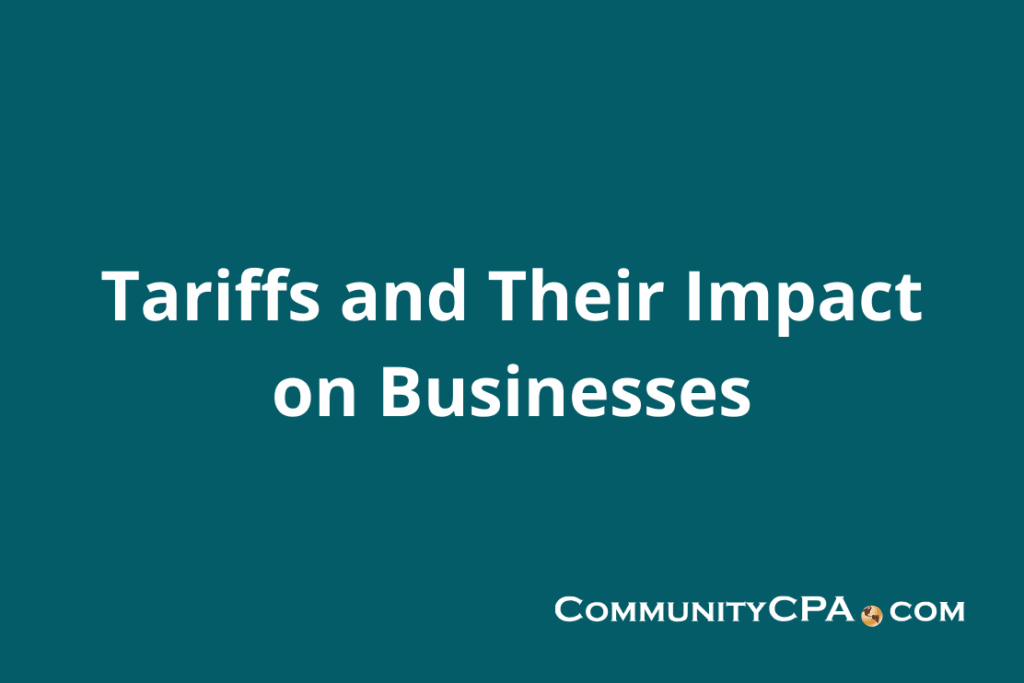How tariffs are reshaping the landscape for businesses
Tariffs remain a confusing, uncertain, and hot-button issue in today’s global economy. As your trusted CPA firm, we believe it’s essential that our clients understand how tariffs work and what impact they might have on your operations, costs, and bottom line.
What Is a Tariff?
A tariff is a tax imposed by a government on imported goods. While historically used as a revenue source for governments, tariffs are now more commonly used as a strategic tool to protect domestic industries from foreign competition.
But it’s important to remember: tariffs are not unique to the United States. They are part of a broader international system of trade regulation. Countries around the world impose tariffs as part of their trade policies, and often these taxes are reciprocal — meaning when one country imposes a tariff, others respond in kind.
The Real-World Impact on Businesses
- Increased Costs: Many businesses rely on imported materials or goods — everything from electronics and packaging to raw materials and parts. The new tariffs on imports from countries like China, Canada, and Mexico have already led to higher input costs, making it more expensive to operate.
- Disrupted Supply Chains: Tariffs can make existing supply chains more expensive or completely unviable. This forces businesses to scramble for alternatives — often at greater cost and with longer lead times. The result? Delays, uncertainty, and operational headaches.
- Job Losses and Layoffs: Some manufacturers facing higher material costs and reduced demand have had to reduce staff or pause production. With fewer buyers and fewer inputs, some are halting production altogether.
- Agricultural Fallout: Farmers — often exporters themselves — are being squeezed hard. Foreign retaliation in the form of tariffs on U.S. agricultural goods has caused some farms to close as crops go unsold and revenues vanish.
- Higher Consumer Prices: The ripple effects of tariffs hit consumers, too. With businesses paying more for goods, the costs are passed down. Everyday necessities like food and household items are seeing price hikes, while many retailers face shrinking profit margins.
What Can Businesses Do?
We know that many of these changes are beyond the control of individual business owners. However, there are steps you can take to mitigate the risks:
- Re-evaluate your supply chains: Look for alternative suppliers in countries not affected by the tariffs.
- Monitor your cash flow closely: Build contingency plans for rising costs or sales disruptions.
- Consider tax planning strategies: There may be credits or deductions available to help your business. For example, foreign tax credits, inventory accounting strategies, or accelerated depreciation may help reduce your tax burden.
- Consult with your CPA: We can help you understand the direct and indirect impacts on your financials and develop strategies to maintain profitability.
Final Thoughts
Tariffs are a powerful tool in trade policy — but they come with consequences. For many businesses, especially smaller ones, these consequences are real and immediate. At Community CPA, we’re here to help you navigate these challenges with proactive financial guidance and personalized support.
If you have questions about how tariffs may affect your business, don’t hesitate to reach out. We’re here to help you adapt, stay informed, and make confident decisions in an uncertain economic landscape.

